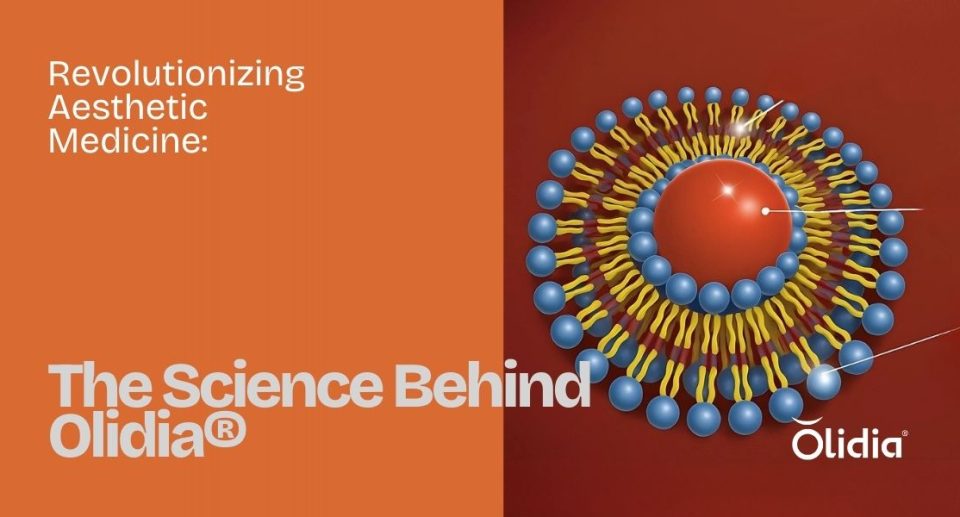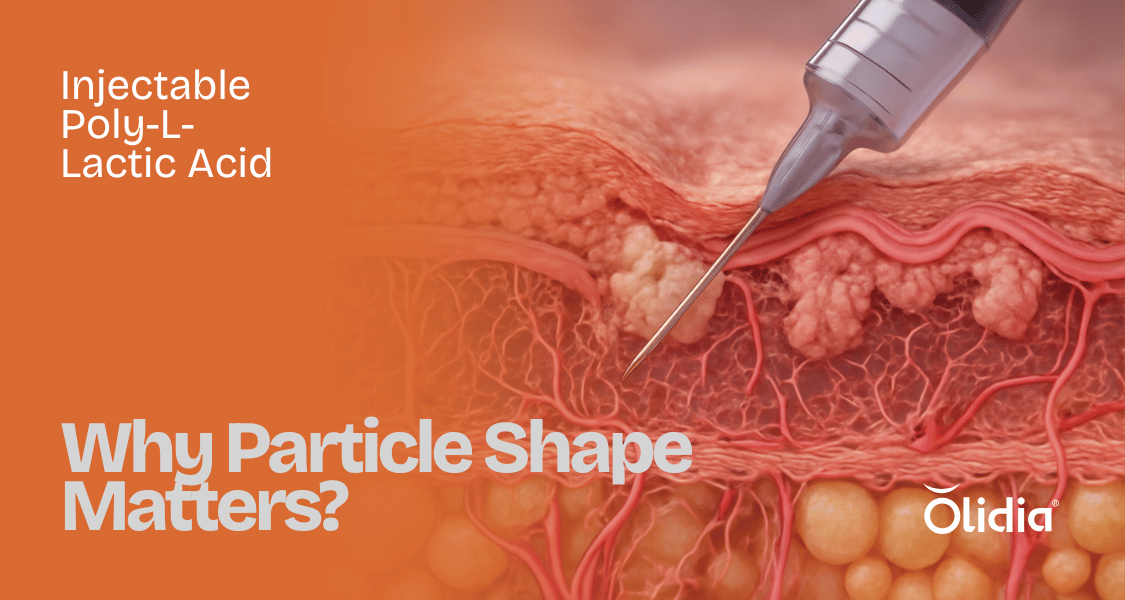PLLA Collagen Formation Mechanism & M2 Macrophage Activation: The Science Behind Olidia
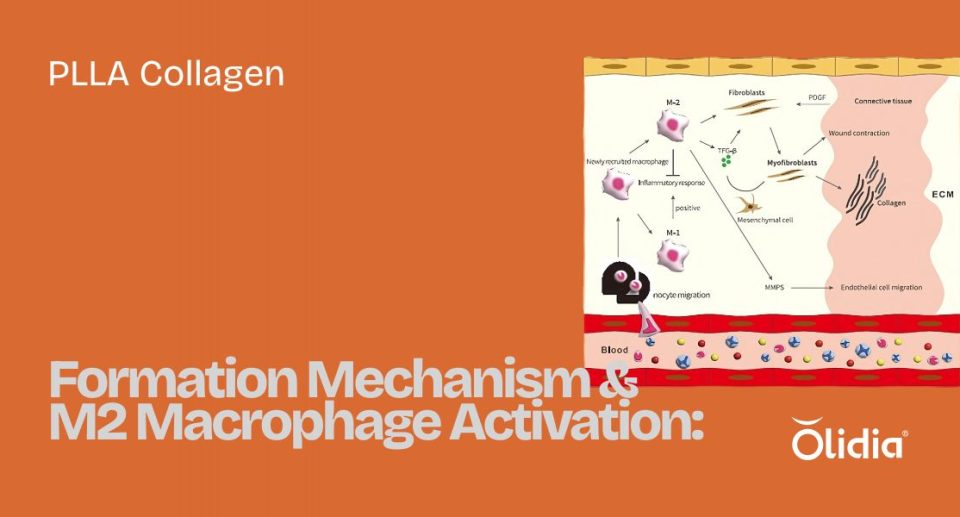
Olidia is an innovative biostimulatory injectable composed of Poly-L-lactic Acid (PLLA) microspheres. Unlike traditional dermal fillers that simply add volume, Olidia works by activating the body’s natural regenerative processes to rebuild the skin’s structural foundation — primarily through collagen production and tissue remodeling.
This remarkable effect is driven by two interconnected biological mechanisms:
- M2 Macrophage Polarization
- PLLA-Induced Collagen Synthesis via the IL-4/IL-13/TGF-β1 Pathway
Let’s break down how it works.
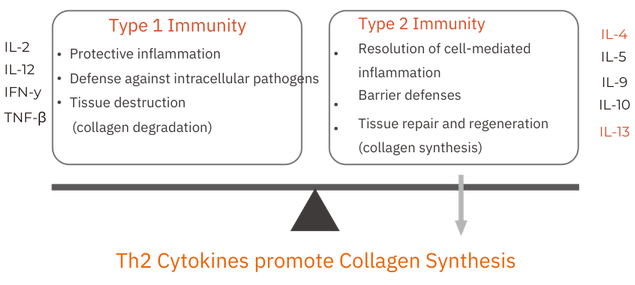
1. PLLA Triggers M2 Macrophage Polarization (The Healing Response)
When Olidia’s ellipsoidal PLLA particles are injected into the layer between the dermis and subcutaneous tissue, they are recognized by the immune system as foreign bodies. This initiates a controlled foreign body reaction.
Instead of promoting inflammation, PLLA steers immune cells — specifically macrophages — toward an M2 phenotype. These are often called “healing” or “repair” macrophages because they:
- Suppress excessive inflammation
- Promote tissue repair
- Stimulate extracellular matrix (ECM) production
This shift is driven by the IL-4 and IL-13 cytokine axis, which plays a central role in activating Type 2 immunity — the body’s natural pathway for wound healing and regeneration (as opposed to Type 1 immunity, which deals with pathogens and can cause tissue damage).
✅ Key Pathway:
PLLA → ↑ IL-4 / IL-13 → M2 Macrophage Polarization
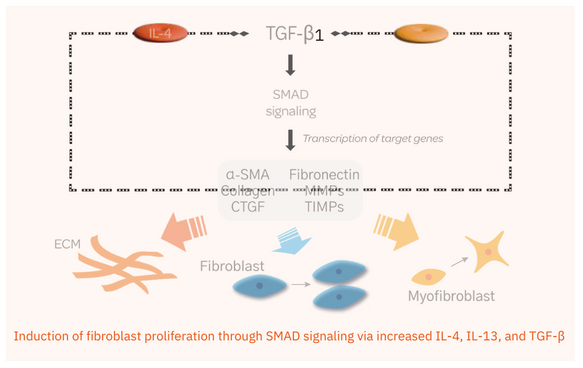
2. M2 Macrophages Activate Fibroblasts to Produce Collagen
Once M2 macrophages are activated, they release TGF-β1 (Transforming Growth Factor-beta 1) — a master regulator of tissue regeneration.
TGF-β1 binds to fibroblasts in the dermis and triggers a cascade of intracellular signaling, primarily through the SMAD pathway (specifically SMAD2/3), leading to:
- Fibroblast proliferation
- Differentiation into myofibroblasts (marked by expression of α-SMA)
- Increased production of extracellular matrix (ECM) components, including:
- Collagen Type I and Type III – the core structural proteins of youthful skin
- Fibronectin – supports cell adhesion and tissue organization
- Hyaluronic Acid (via HAS2) – improves hydration and volume
- CTGF (Connective Tissue Growth Factor) – enhances collagen synthesis
Additionally, Olidia helps maintain a healthy balance between collagen formation and degradation by:
- ↑ TIMPs (Tissue Inhibitors of Metalloproteinases) – protect existing collagen
- ↓ MMPs (Matrix Metalloproteinases) – reduce collagen breakdown
✅ Key Pathway:
M2 Macrophages → TGF-β1 → SMAD Signaling → Myofibroblast Activation → Collagen I/III + ECM Production
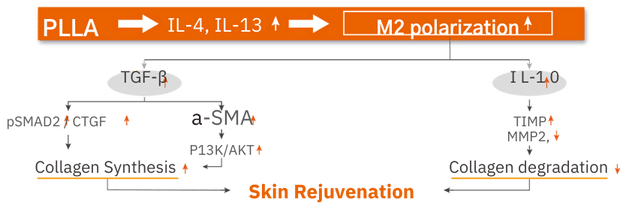
Why the Injection Layer Matters
Olidia is designed for precise placement between the dermis and subcutaneous tissue, where:
- Fibroblasts are abundant
- Immune surveillance is active
- Mechanical tension supports myofibroblast maturation
Its ellipsoidal shape and large surface area maximize interaction with surrounding cells, enhancing M2 activation and long-term stimulation.
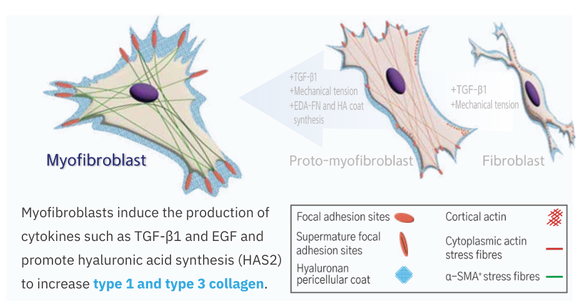
The Result: Natural, Long-Lasting Rejuvenation
Over time, this biological cascade leads to:
- Gradual restoration of facial volume
- Improved skin firmness, elasticity, and texture
- Reduction in fine lines and wrinkles
- A natural, refreshed appearance — not a “filled” look
Because Olidia works by stimulating your own collagen, results develop subtly and can last for 18 months or longer, with proper treatment protocols.
Scientific Backing
This mechanism is supported by immunobiology research, including studies on macrophage function in skin repair, such as:
Immunobiology of Macrophages in Skin Injury and Repair, Volume 216, Issue 7, July 2011, Pages 753–762.
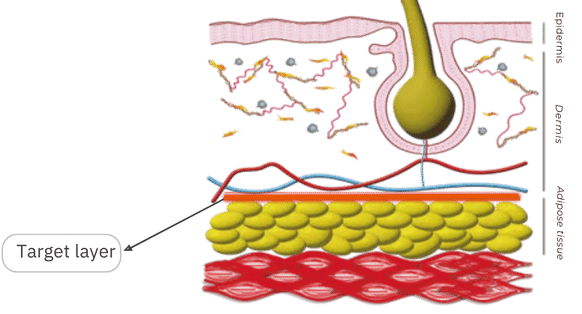
In Summary: How Olidia Works
| STEPS | MECHANISM |
|---|---|
| 1 | Myofibroblasts produce collagen I/III, fibronectin, HA, CTGF |
| 2 | PLLA particles injected into the dermal-subcutaneous junction |
| 3 | M2 macrophages releaseIL-4, IL-13, and TGF-β1 |
| 4 | Controlled foreign body reaction induces M2 macrophage polarization |
| 5 | Fibroblasts transform intomyofibroblasts(α-SMA+) |
| 6 | Myofibroblasts produce collagen I/III, fibronectin, HA, and CTGF |
| 7 | ECM is rebuilt →skin rejuvenation from within |
Olidia isn’t just a filler — it’s a bio-revitalizer.
By harnessing the power of immune modulation and natural tissue regeneration, it represents the next generation of aesthetic medicine: scientifically advanced, biologically intelligent, and beautifully natural.

